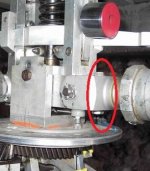anthom
Member
What does being a German company have to do with the issue? Or being the biggest in sales. It is also my understanding that the Company has since filed for "Preliminary Insolvency". It does not dispel the fact that there were failures, irrespective of your statistics. Statistics aside, what if the designs were flawed during the early evolution of the product, and hence caused the failures?But that clearly is a statistical question, Vance. If you have a flaw in your design it is much more likely to show up if you sell 3000 aircraft instead of, let's say, 30. Or, in the same context, if Boeing had sold just three 737MAX aircraft these would probably still be flying.
Quote: AutoGyro had not made that many gyroplanes when the problem was discovered. /Quote
What time are we talking here, ten years ago or fifteen?
Perhaps you might want to try and get over the fact that currently the world wide market leader in autogyros is a German company...;-)
Suppose the evolution started with a flawed design and the initial 300 of the 3000 machines were flawed, does that mean that the flaws occurred because of the large numbers produced, or the fact that the initial designs were not proper? So statistically, if they had stopped production after 300, the flaws would have still manifested and shown up.


